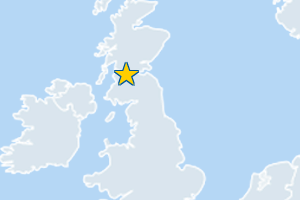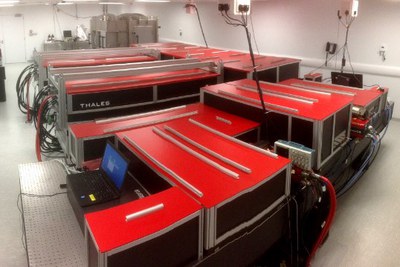STRATH (Glasgow, UK)
Research highlights
STRATH
University of Strathclyde,
Glasgow, United Kingdom

http://silis.phys.strath.ac.uk/
Contact: Professor Dino Jaroszynski
Laser-driven accelerators and radiation sources
- Laser-driven accelerators include a laser wakefield acceleration (LWFA)-driven free electron laser [10th Workshop on AAC 902-913 (2002), and [Phil. Trans. of the Royal Soc. A. 364, 689 (2006)].
- The ion channel free-electron laser (ICL) with varying betatron amplitude [New J. Phys. 16, 093025(2014)].
- Laser wakefield accelerator-driven undulator radiation [Nat. Phys. 4, 130-133 (2008)] [Appl. Phys. Lett. 104, (2014)].
- Gamma-rays from harmonically resonant betatron oscillations in a plasma wake [Nat. Phys. 7, 867 (2011)].
- Near-100 MeV protons through hybrid laser-driven acceleration in targets undergoing relativistic self-induced transparency [Nat Comm. 9, 724 (2018)].
- Relativistic plasma optics and photonics [Nat Comm. 7, 12891 (2016)] [Phys. Rev. Appl. 14, 034018 (2020)].
- Coupling multiple stage accelerators for TeV energy levels [PRL 120, 154801 (2018)].
Further application highlights
Expertise

The STRATH team studies laser-plasma interactions and particle accelerators based on laser and beam plasma media, and compact radiation sources based on them. The current STRATH facilities include the Scottish Centre for the Application of Plasma-based Accelerators (SCAPA), that hosts a 5 Hz 350 TW and 10 Hz 40 TW lasers, and laser-gas, laser-solid, medical and undulator beamlines for applications. An important goal is to produce ultra-short duration bunches of electrons of several GeV for compact X-ray FEL and synchrotron sources based on conventional and plasma-based undulators. The group also investigates laser-driven ion acceleration and electron transport in hot dense matter relevant to laser-driven fusion. These activities map onto a very wide range of tasks involving the development and application of plasma-based particle and radiation sources.

The group has made pioneering advances in laser-based accelerators, radiation sources, and their application (such as LWFA-VHEE radiotherapy), and plasma photonic structures and plasma-based amplifiers. They lead the ALPHA-X project and are applying plasma-based accelerators and radiation sources at SCAPA and other facilities. They are leaders in electron and ion acceleration using intense laser pulses, electron beam transport in dense matter and fusion related problems. The group is active in high field physics and is contributing to developing ELI.
The group is building a novel beamline, Plasma Accelerators for Nuclear Applications and Materials Analysis (PANAMA).
The SILIS group also has substantial theory support, using analytical and numerical methods. They also have a project to implement machine learning in laser-plasma interactions for the benefit of users of the laser-plasma sources. They also engage widely with industry, in particular the medical, nuclear, manufacturing and security industries.

